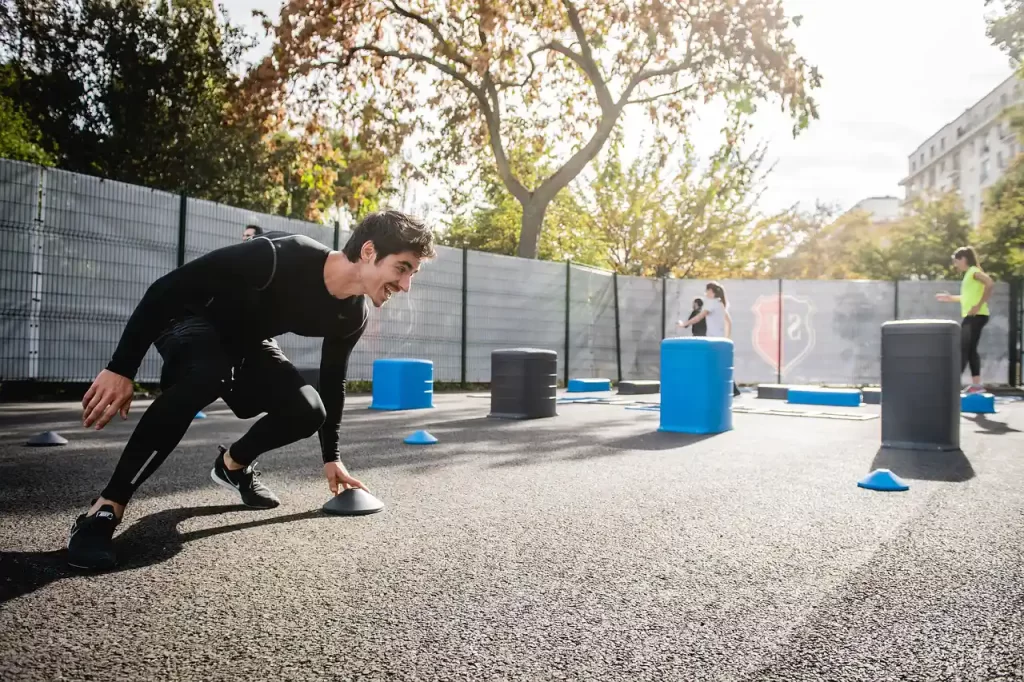Have you ever practiced a fitness program where you start off easy for a while and then suddenly have to increase the intensity of the workout significantly? Well, this is called Interval Training, and it is the main theme of today’s blog post. So, to put it more eloquently, interval training is a type of exercise that alternates between periods of high-intensity and low-intensity activity. It can help you burn more calories, improve your cardiovascular health, and boost your metabolism. We are going to explore what interval training is, how to do it, and how often you should do it to get the most benefits.
What is Interval Training?
Interval training is a form of aerobic exercise that involves varying the intensity of your effort. For example, you might run fast for one minute, then jog slowly for two minutes, and repeat. This way, you’re constantly challenging your body and keeping your heart rate up. Interval training can be done with any type of exercise, such as cycling, swimming, skipping rope, or even walking. The key is to switch between hard and easy phases, according to your fitness level and goals.
How to Do Interval Training
There are many ways to do interval training, but the basic principle is the same: work hard for a short period, then recover for a longer period. You can adjust the duration, intensity, and frequency of your intervals depending on your preferences and abilities. Here are some general guidelines to follow:
- Warm up for at least 10 minutes before starting your intervals. This will prepare your muscles and joints for the higher intensity work.
- Choose an activity that you enjoy and that suits your fitness level. You can use a treadmill, a bike, a rower, or any other equipment that allows you to vary the speed and resistance.
- Start with a 1:2 ratio of work to rest. For example, sprint for 30 seconds, then walk for 60 seconds. As you get fitter, you can adjust the work and rest times.
- Aim for 10 to 20 minutes of total interval time, not counting the warm-up and cool-down. Adjust the duration based on your goals and energy level.
- Cool down for at least 10 minutes after your intervals. This helps your heart rate and blood pressure return to normal and prevents muscle soreness.
Examples of Interval Training in Common Sports Activities
- Running: Jog at a moderate pace for 5 minutes, then sprint for 1 minute. Repeat this cycle for 20-30 minutes.
- Cycling: After a warm-up, pedal at high intensity for 1-2 minutes, followed by 2-3 minutes of slower, easier pedaling. Repeat for about 30 minutes.
- Swimming: Swim one lap at a fast pace, followed by a slower, more relaxed lap.
- Tennis: This sport inherently mimics interval training with its quick sprints, pauses, and bursts of energy.
- CrossFit: Includes interval elements like AMRAPs (As Many Rounds As Possible) or EMOMs (Every Minute on the Minute).

Benefits of Interval Training
- Efficiency: Ideal for busy schedules, offering significant health benefits in shorter sessions.
- Burn More Calories: Your body continues to burn calories post-workout due to the intensity.
- Improve Cardiovascular Health: Regular practice can lower heart disease risk and improve lung capacity.
- No Equipment Needed: Many exercises don’t require special equipment.
How Often Should You Do Interval Training?
The frequency depends on your fitness level, recovery ability, and other workouts. Generally, interval training should be done no more than two or three times per week, with at least one day of rest between sessions to prevent overtraining and injury.
Additional Tips
- Listen to your body and rest when needed.
- Fuel your body with healthy foods and stay hydrated.
- Consult a healthcare professional before starting any new exercise program.
Interval training is an effective way to enhance fitness and health in a short time. It’s suitable for all ages and fitness levels. All you need is a timer, some motivation, and a willingness to push yourself. Give it a try and discover its benefits for yourself!
